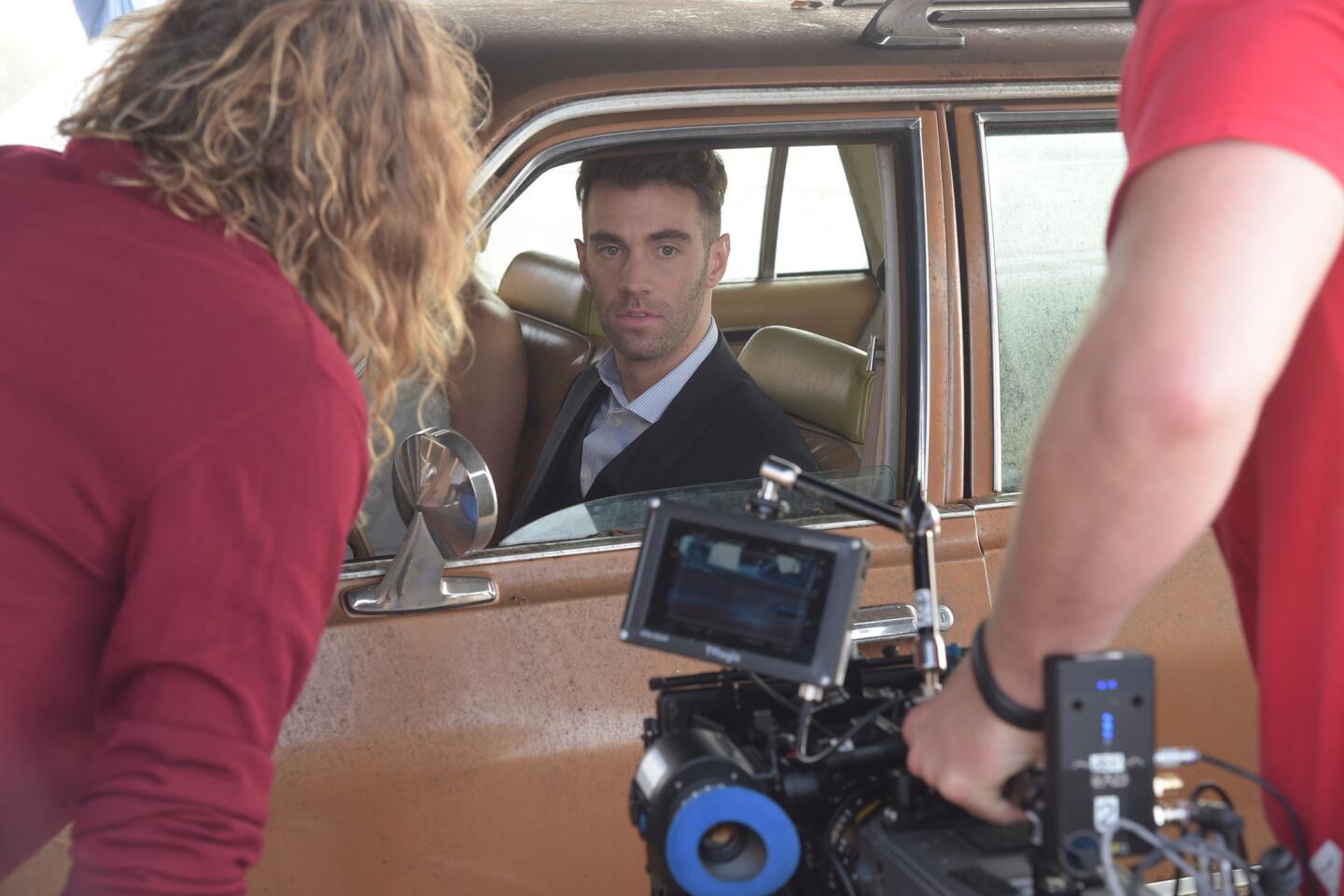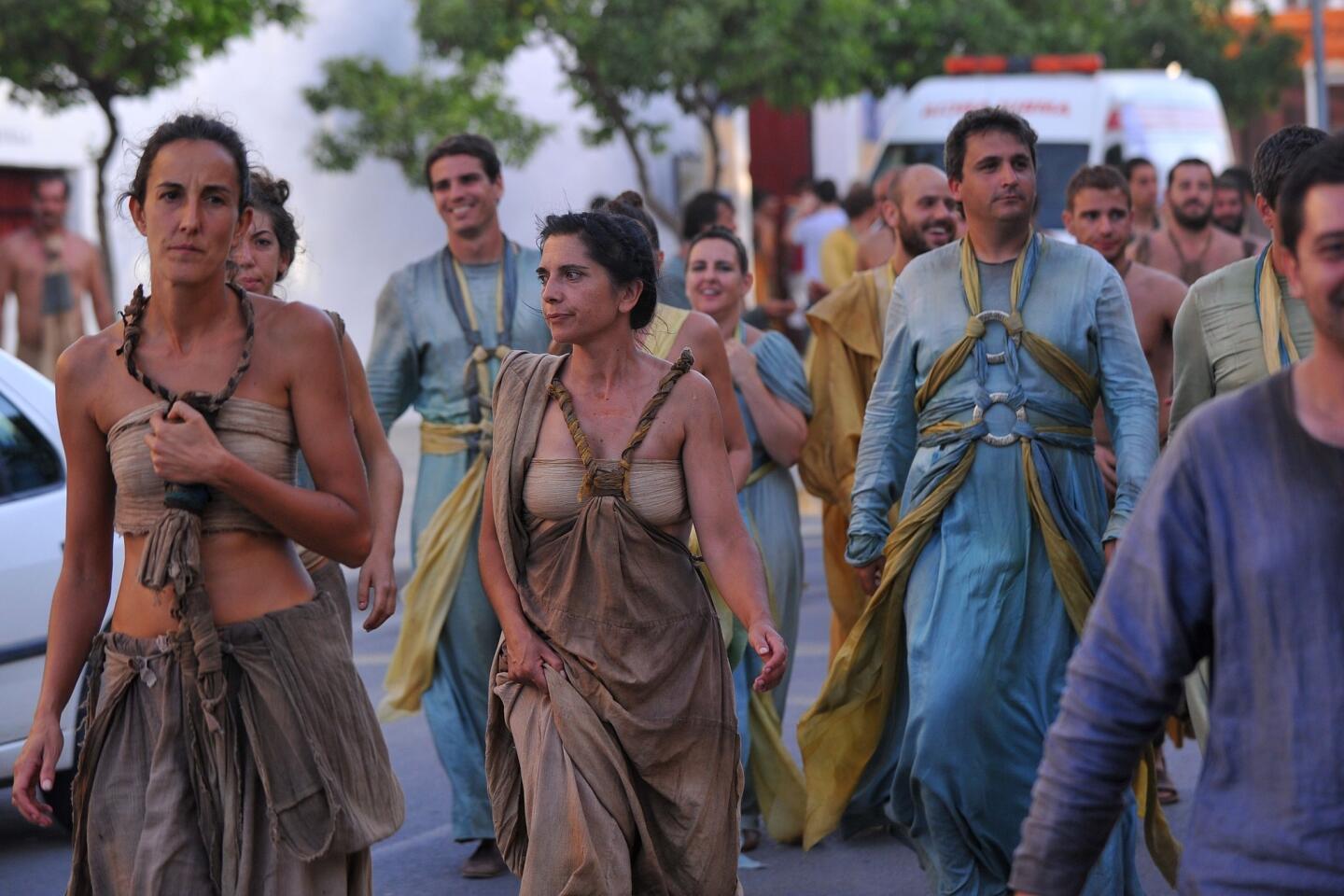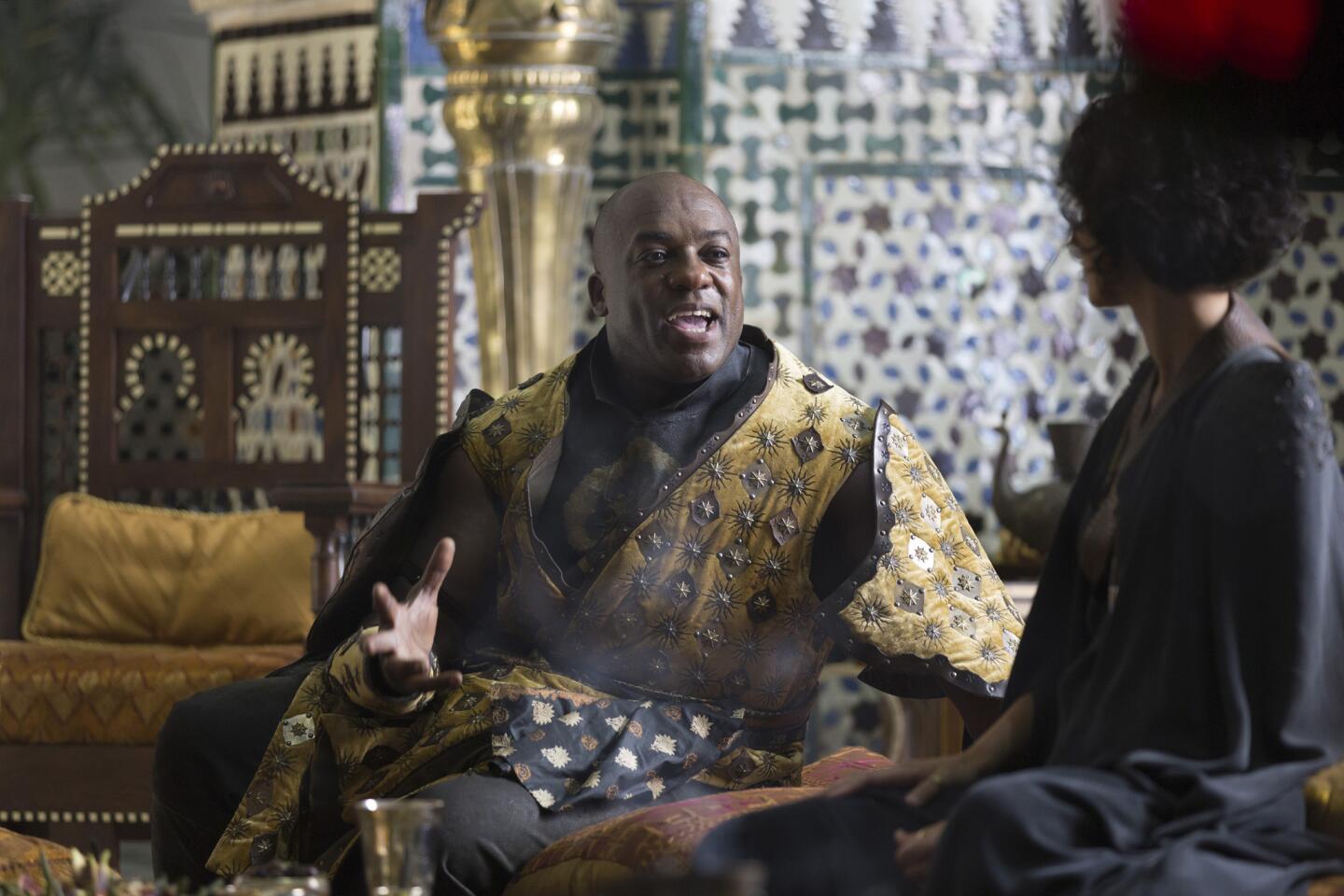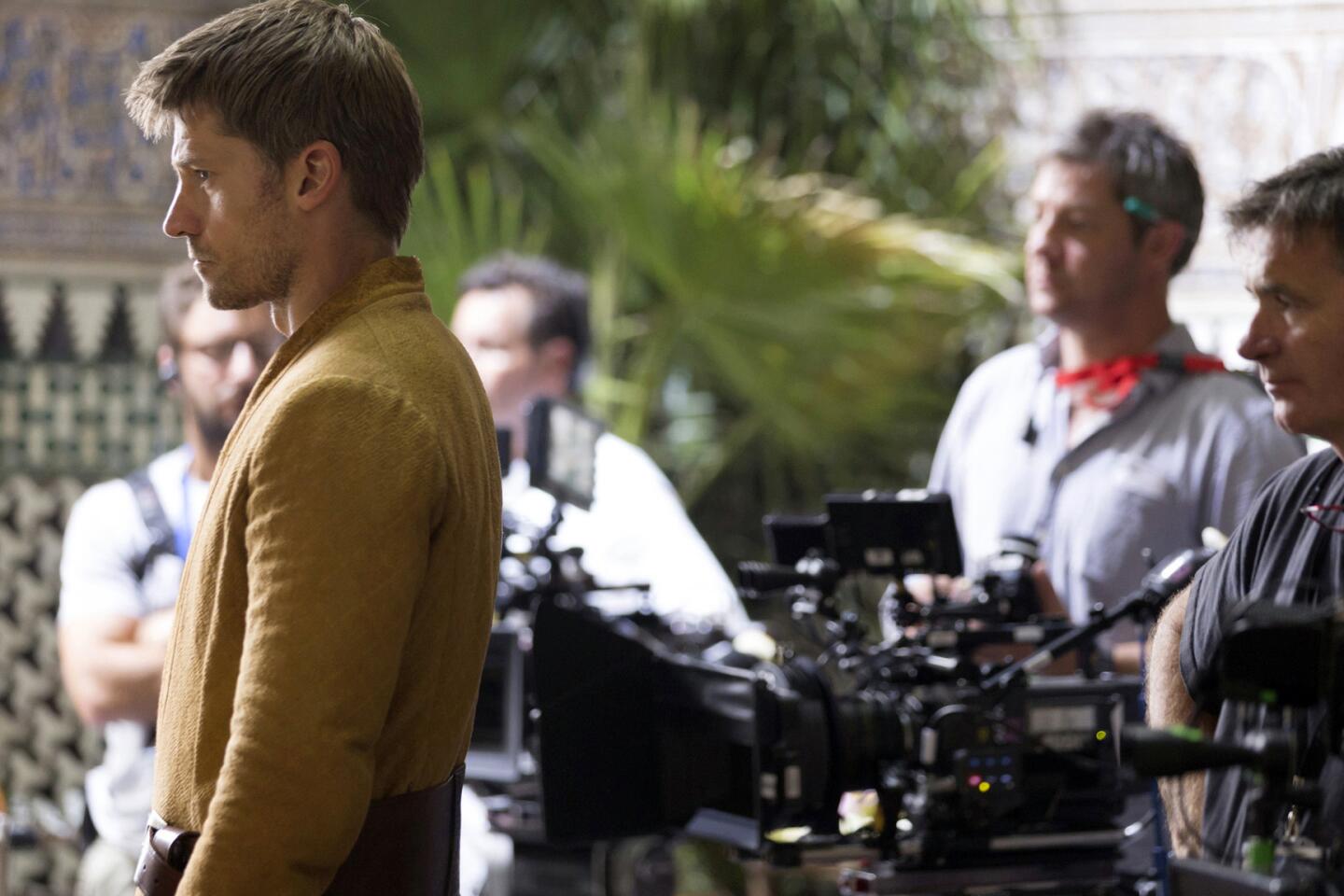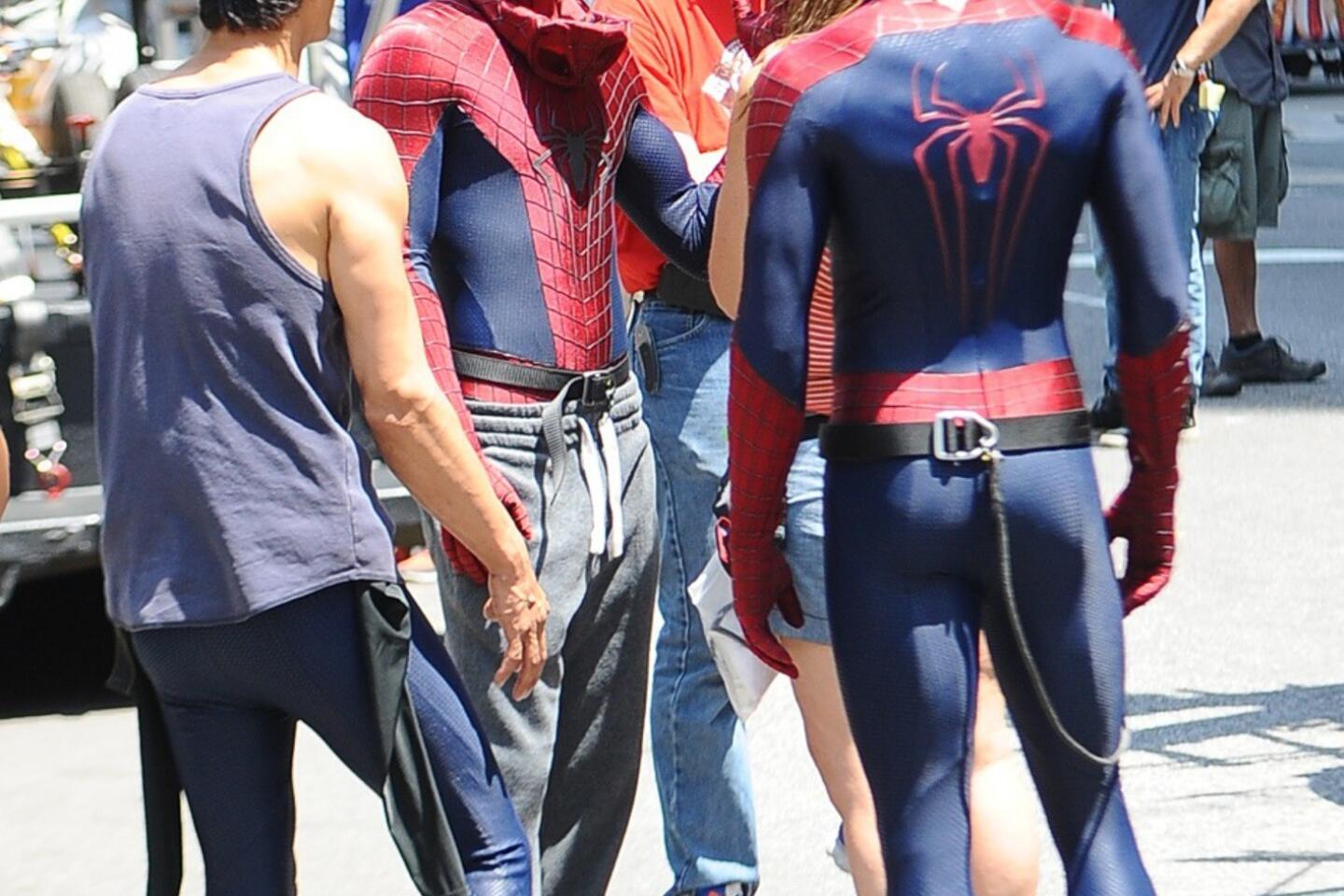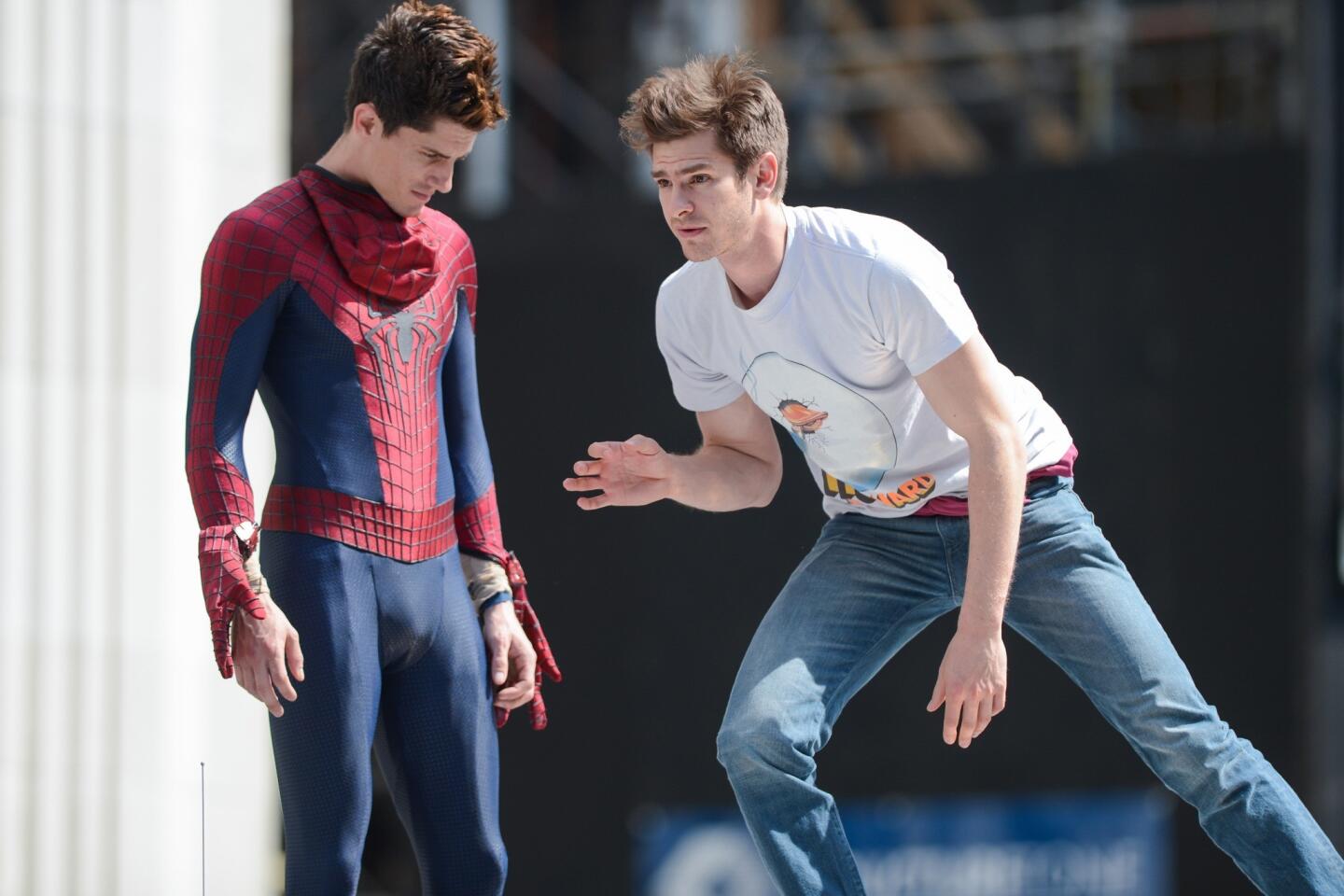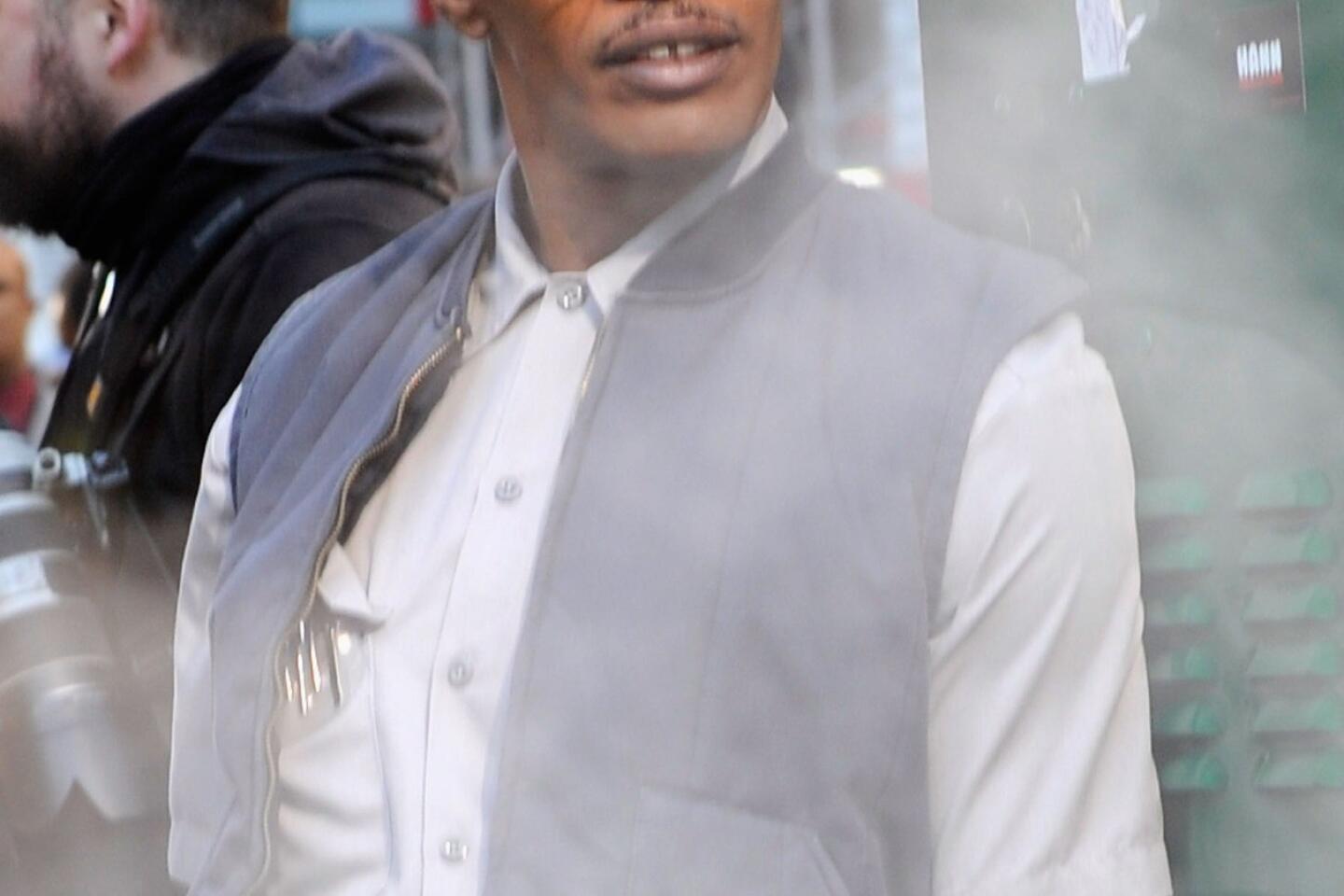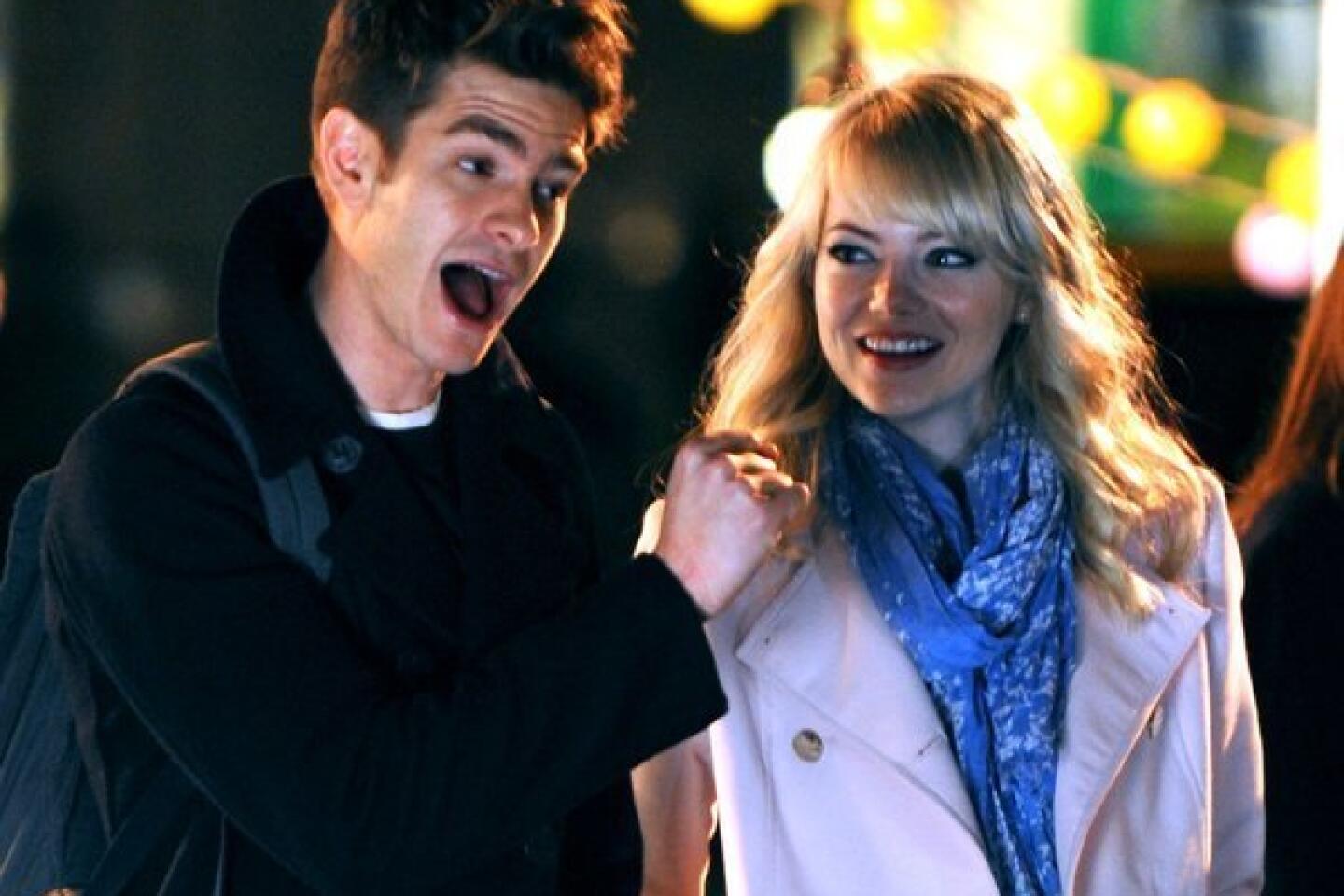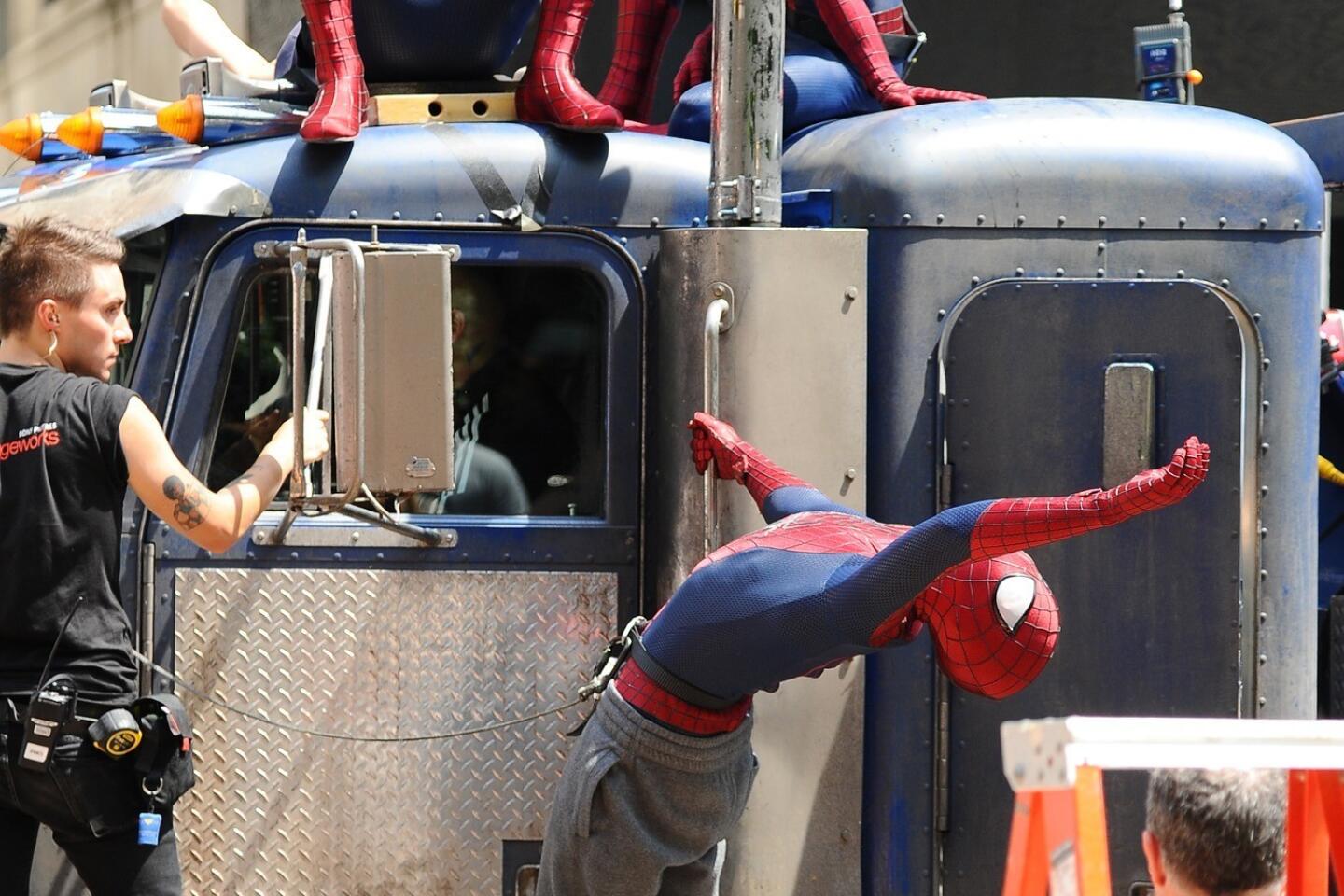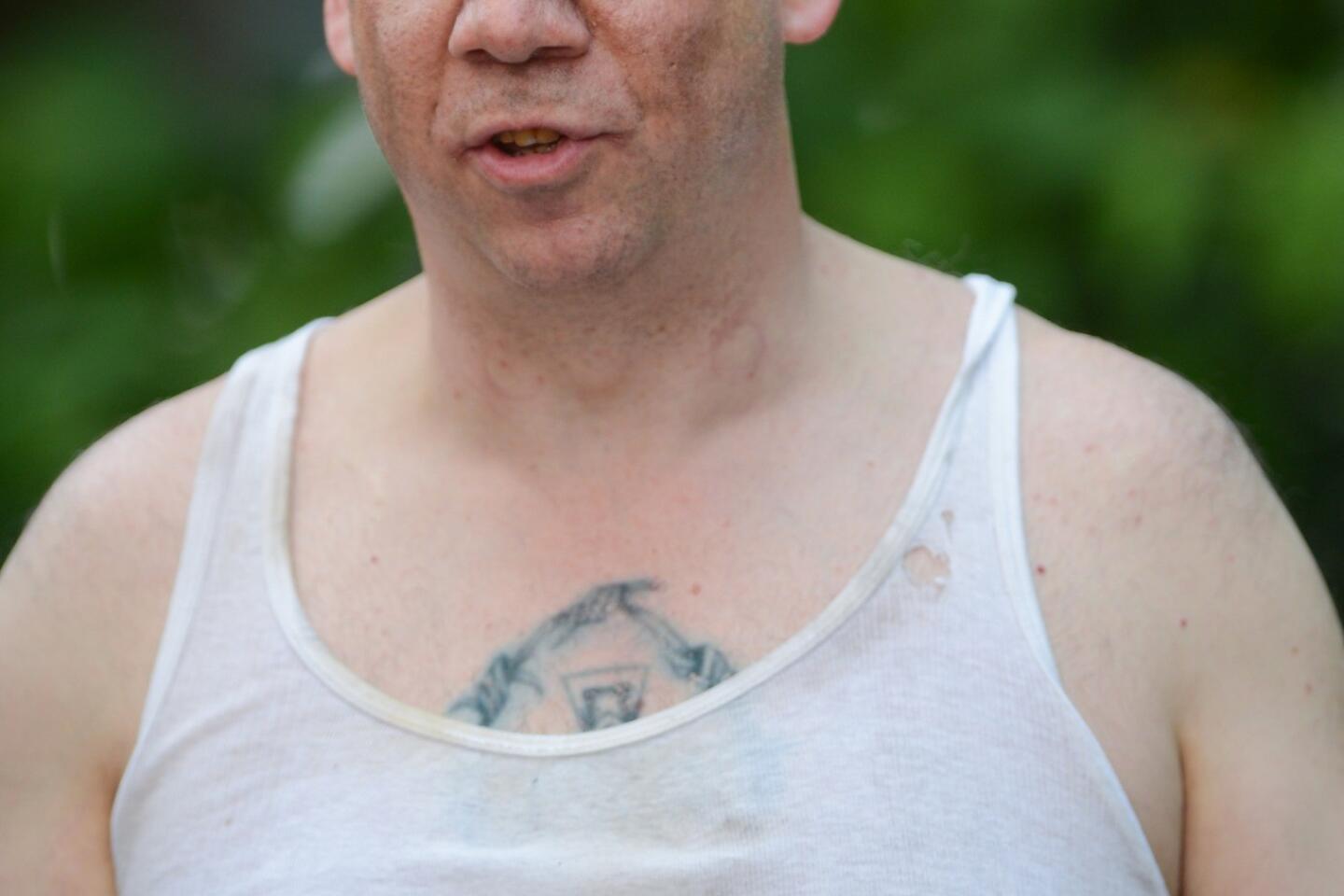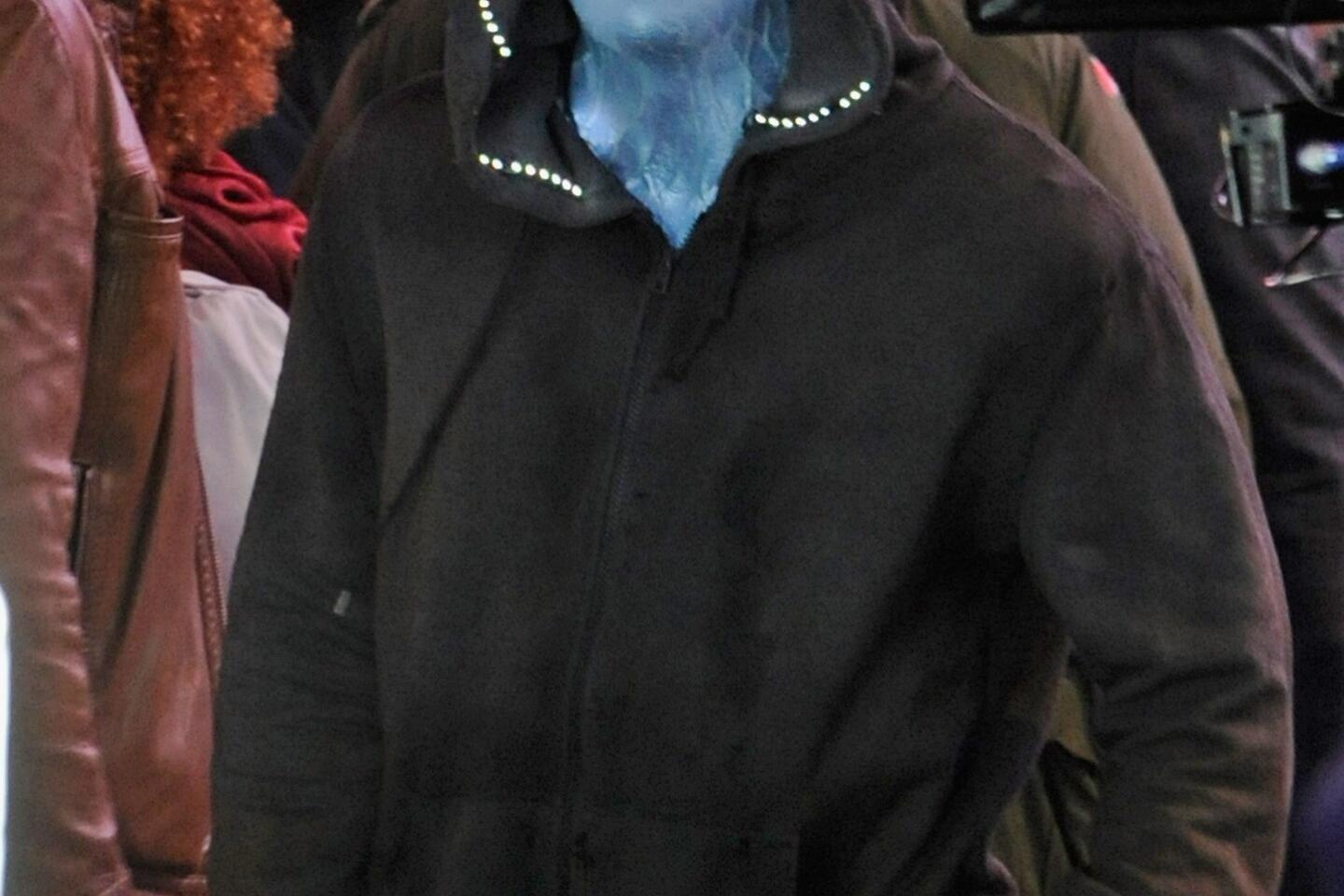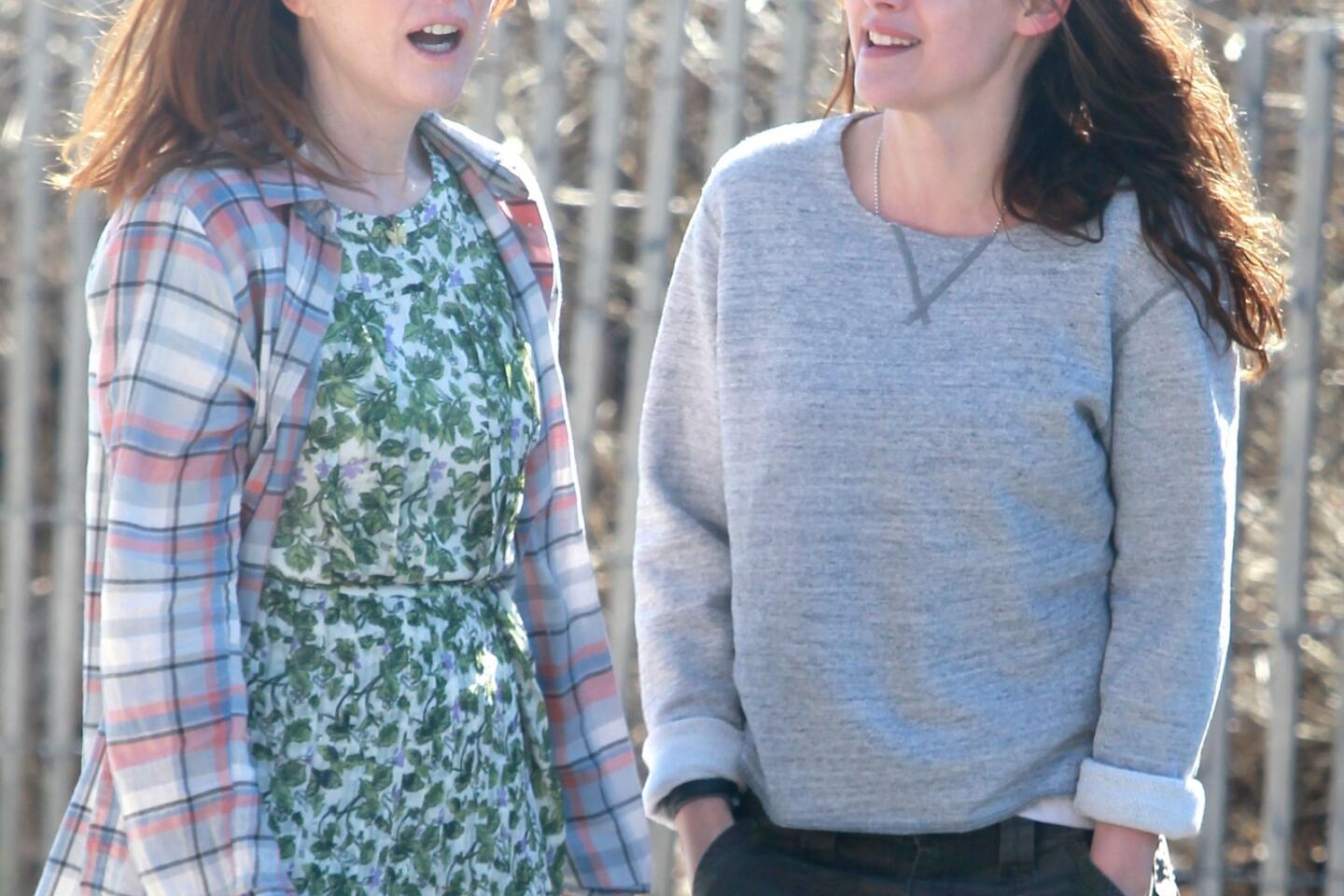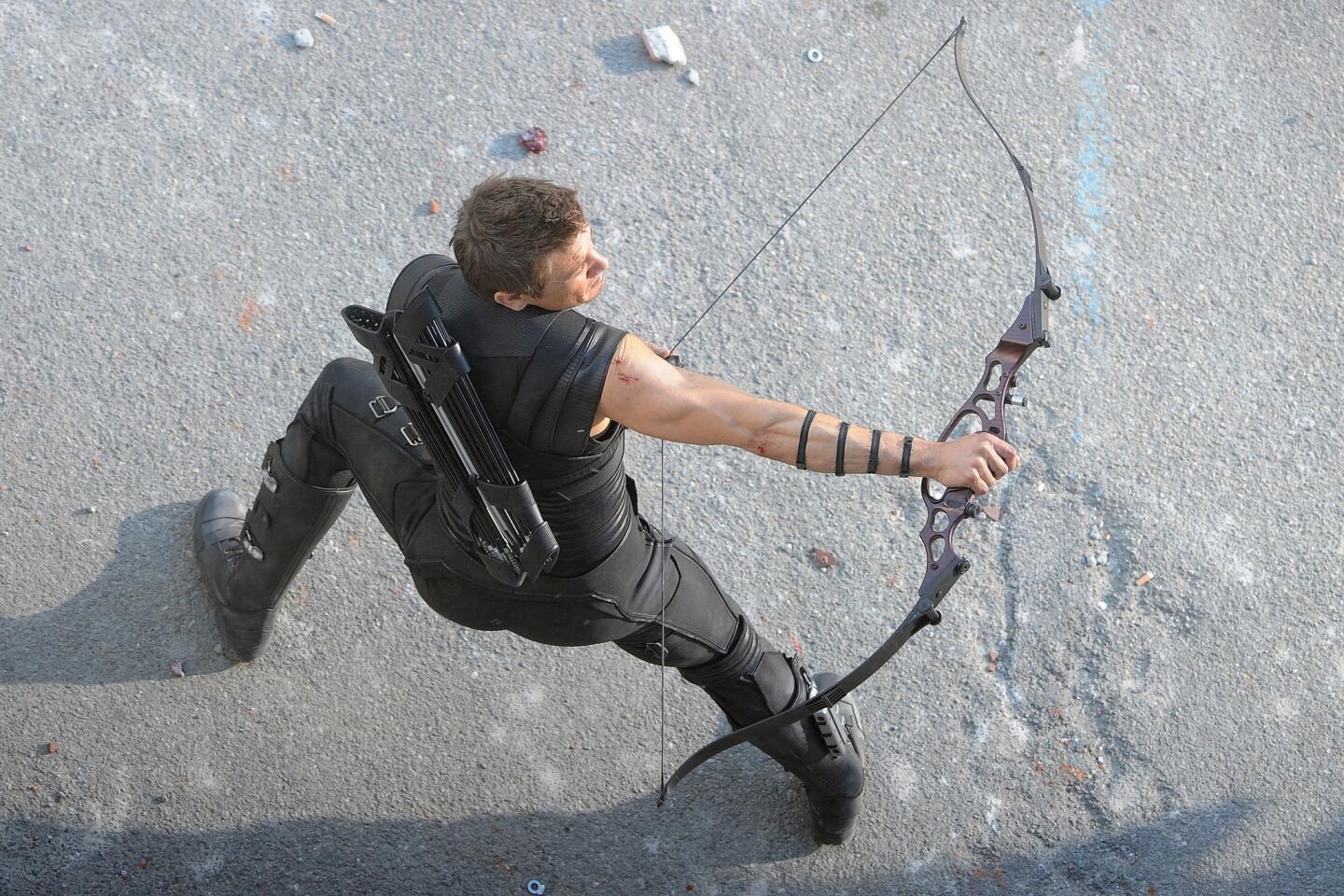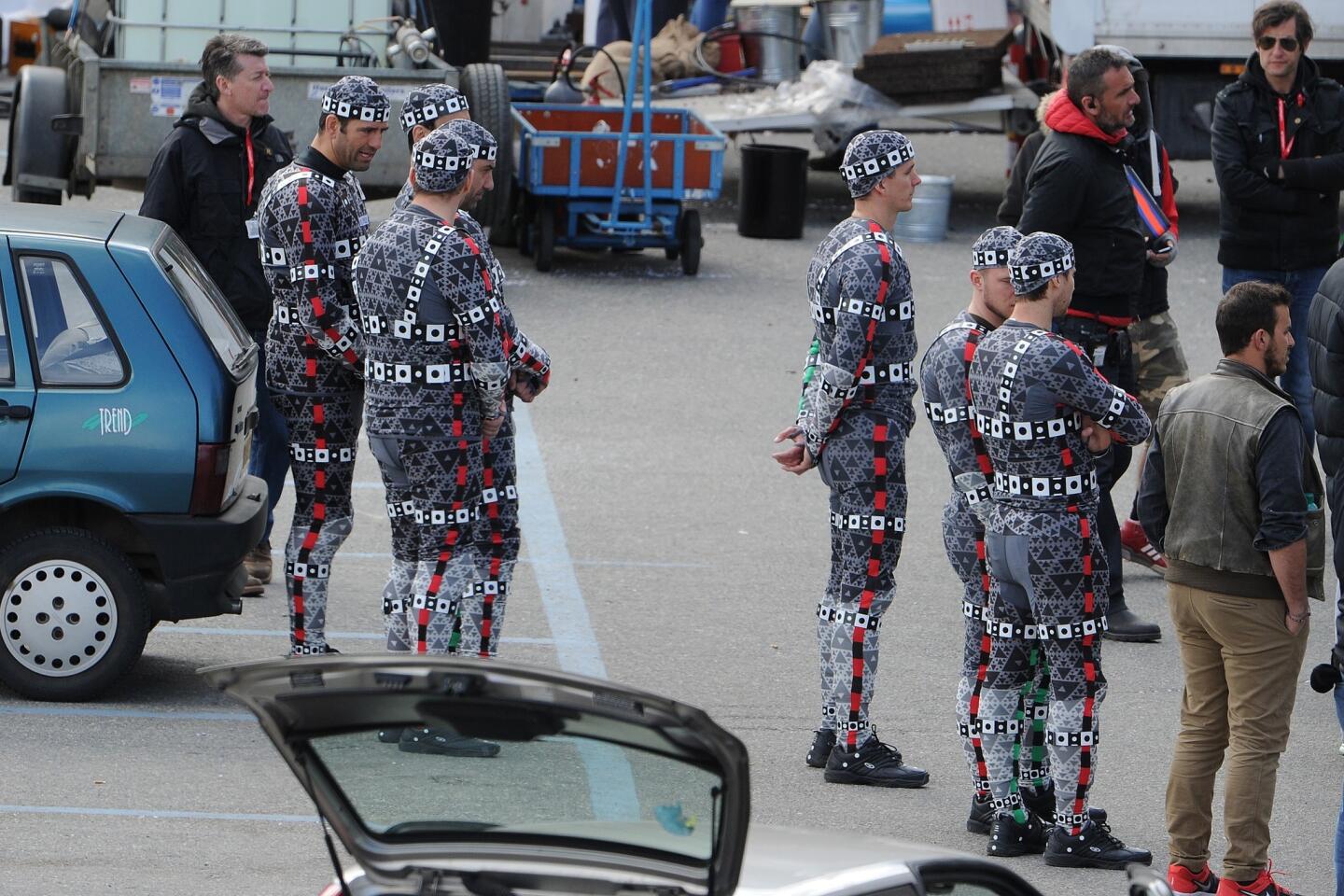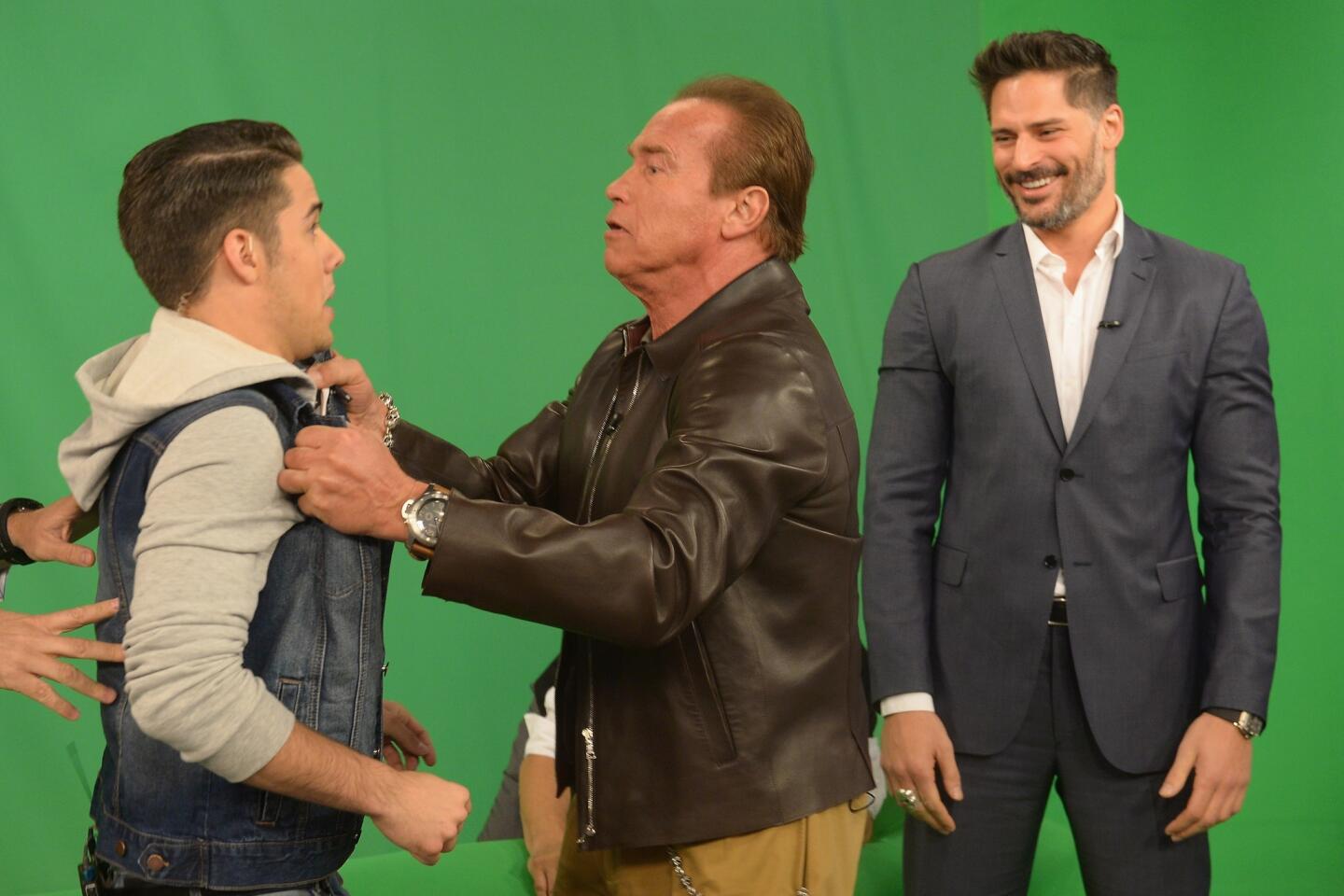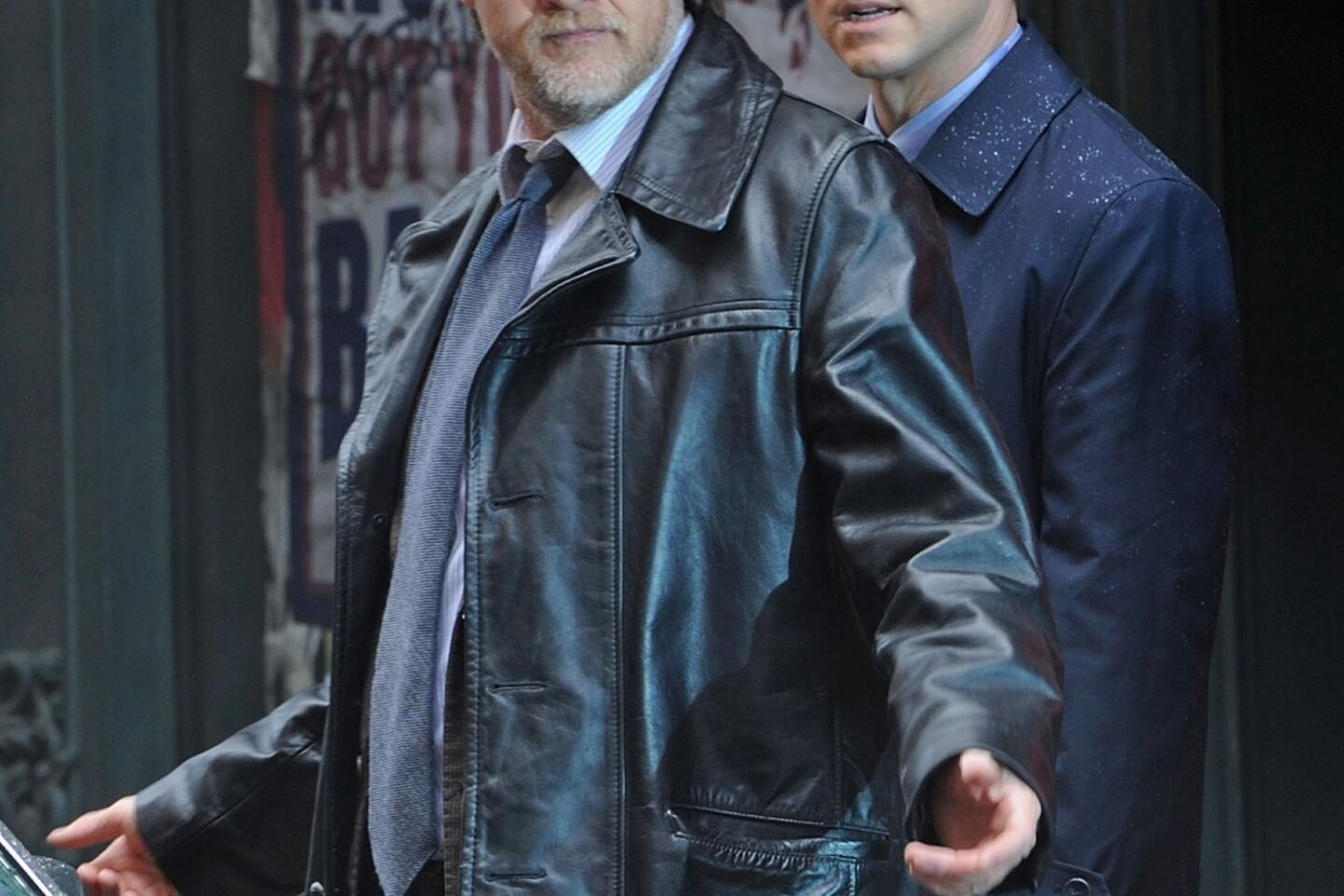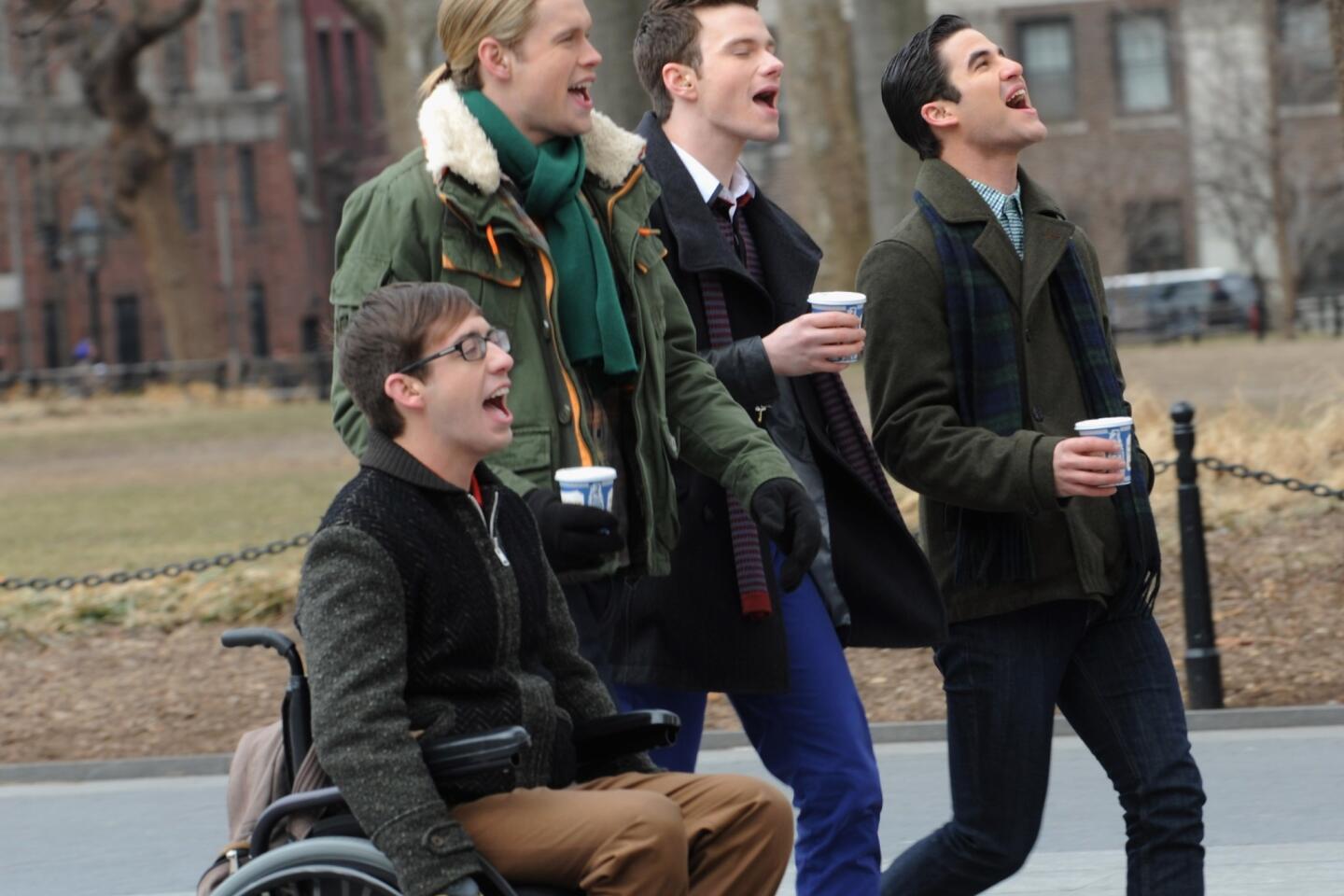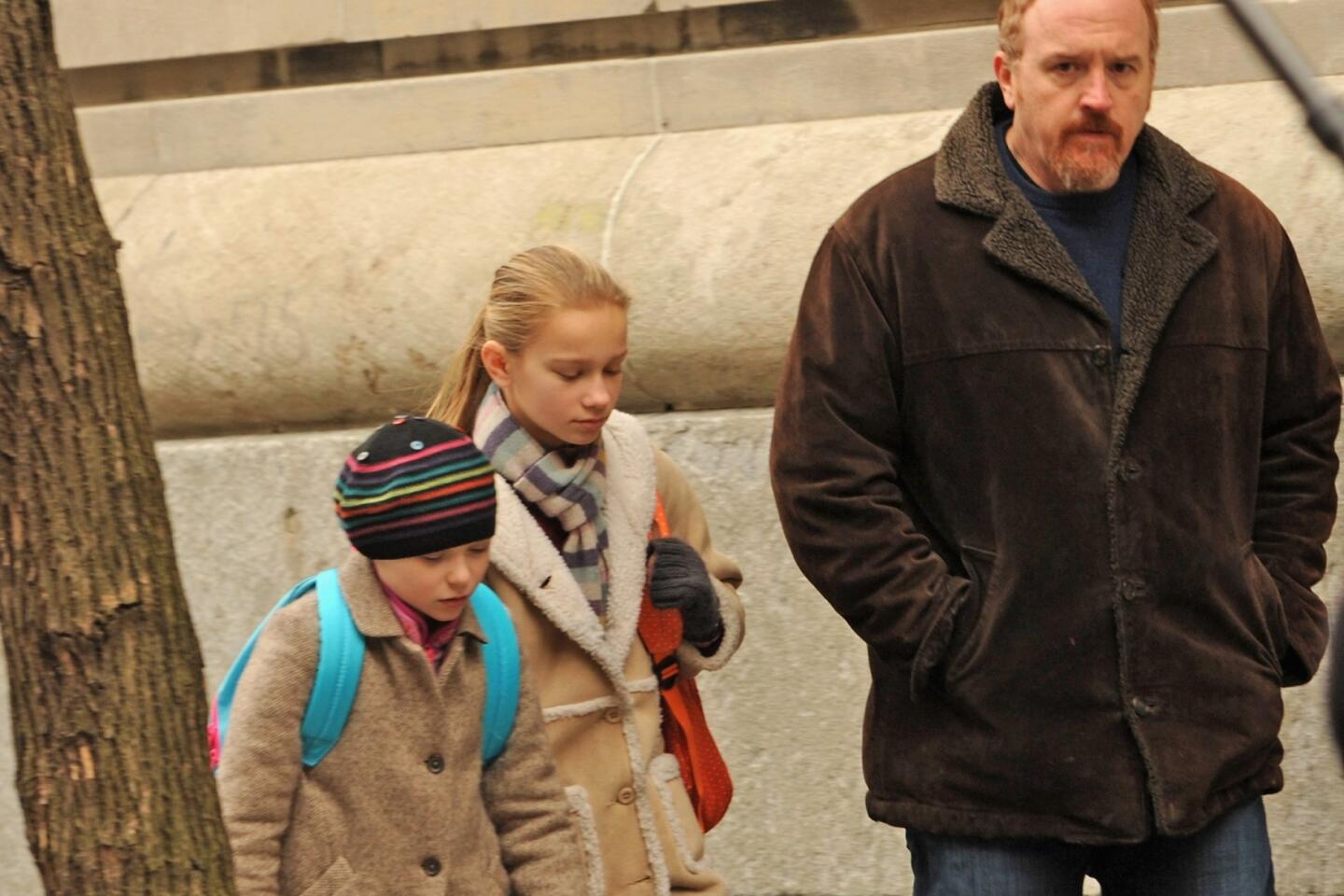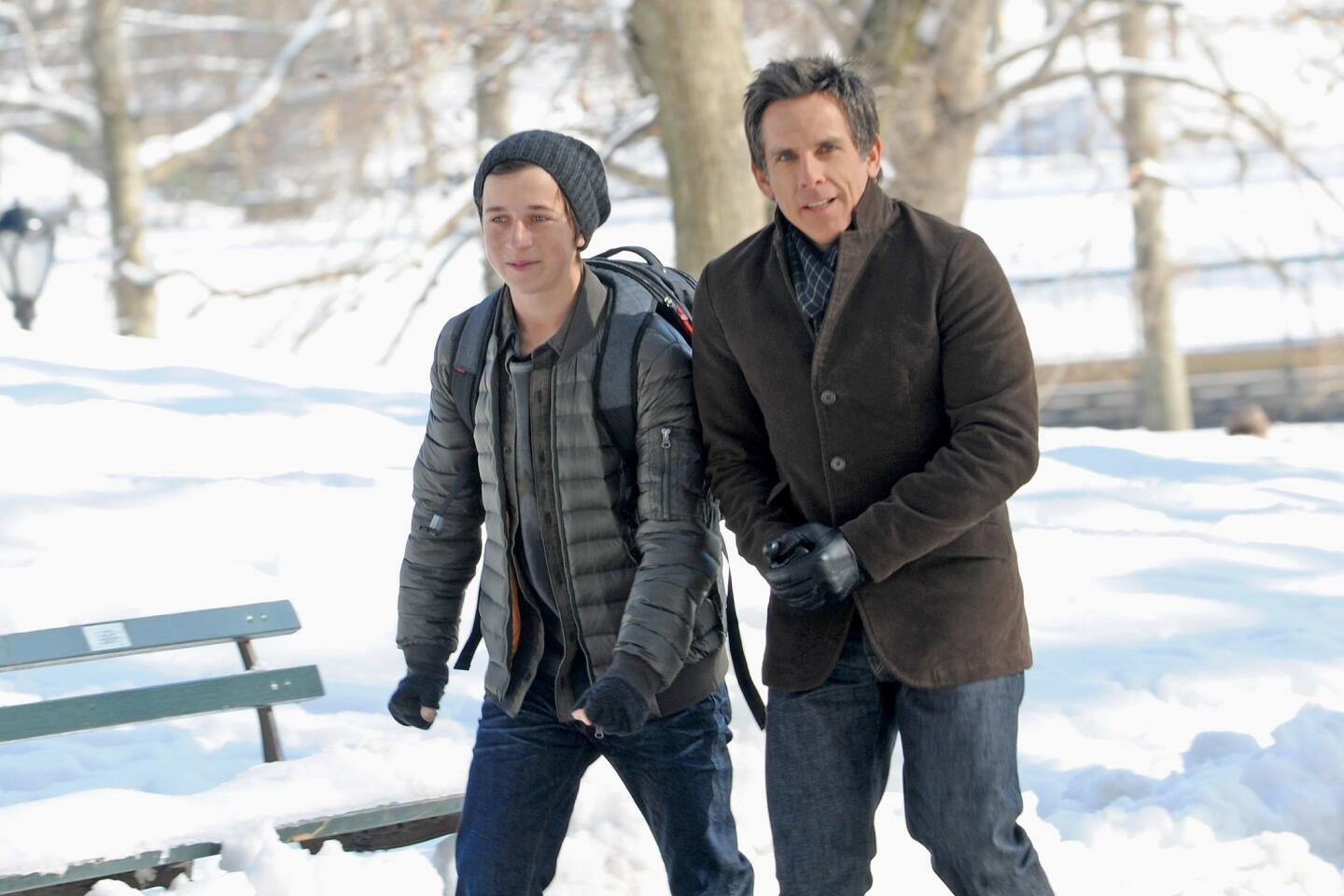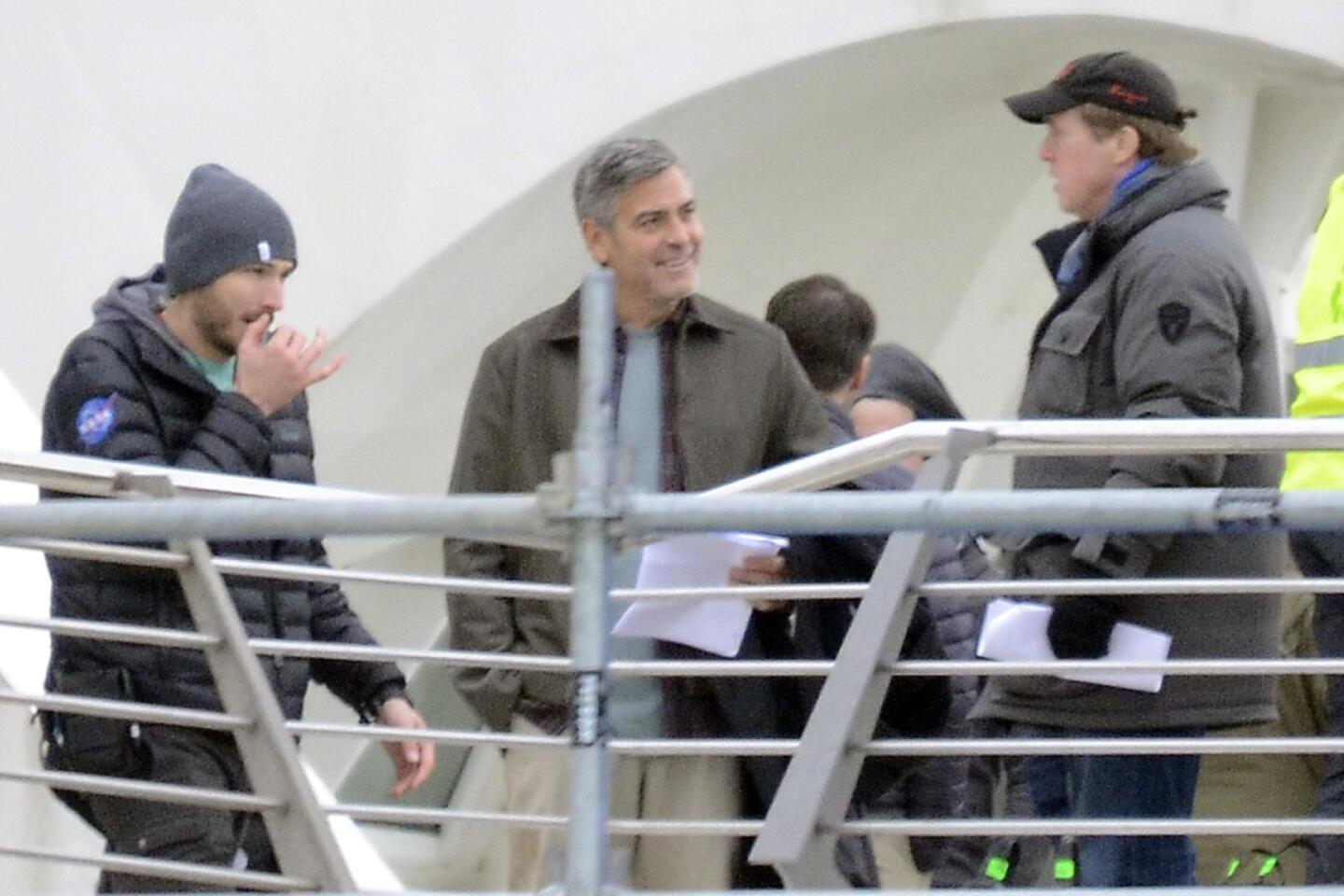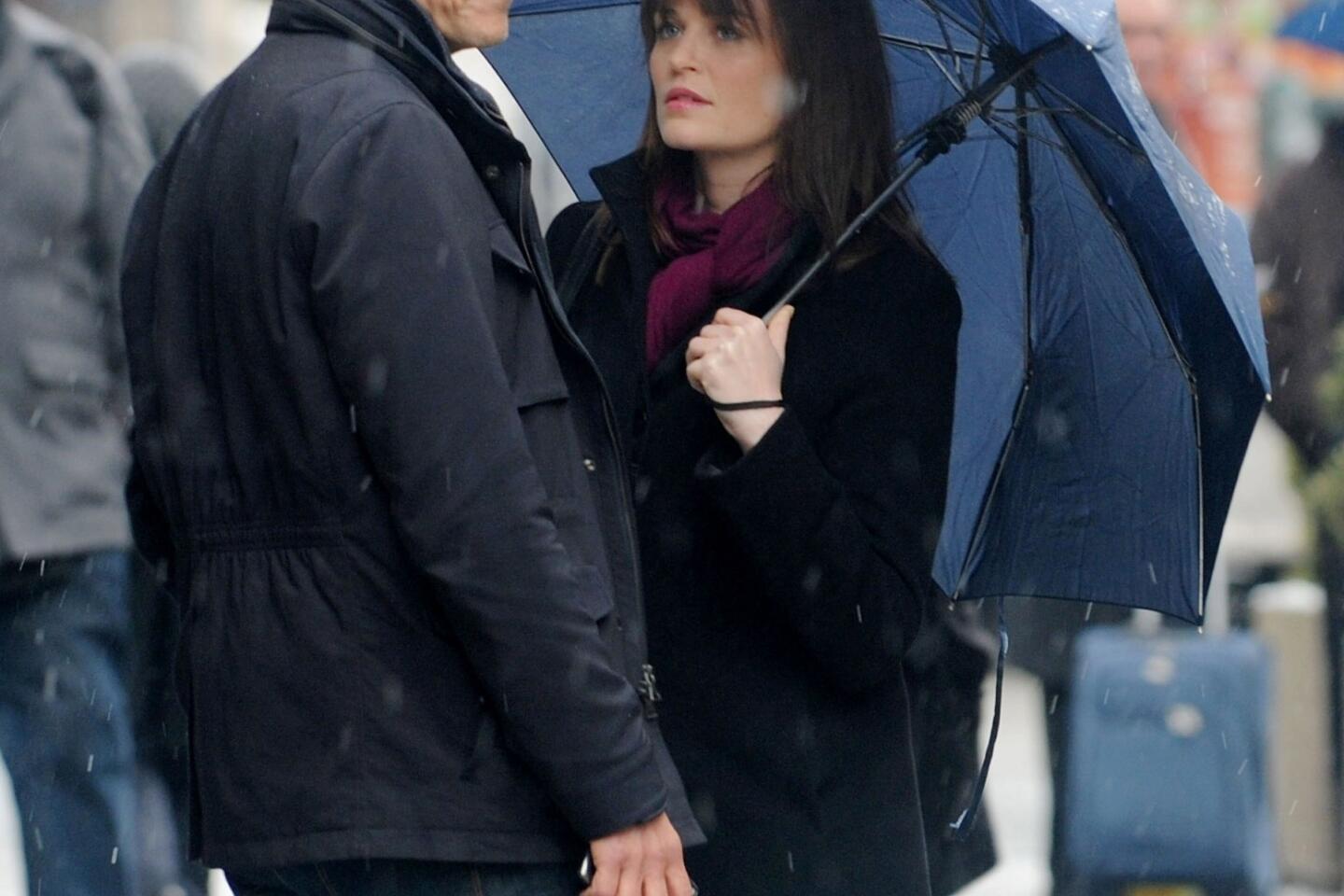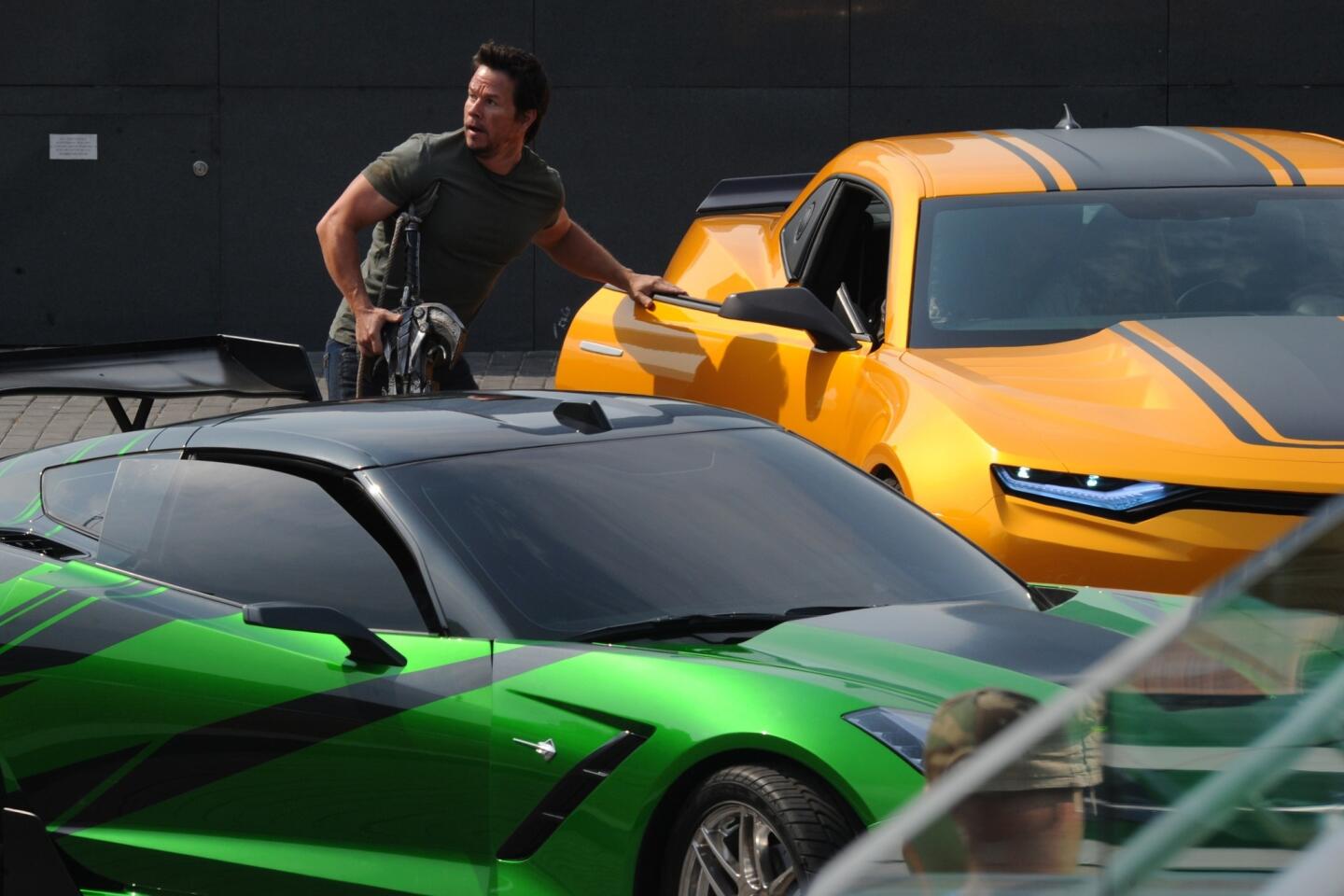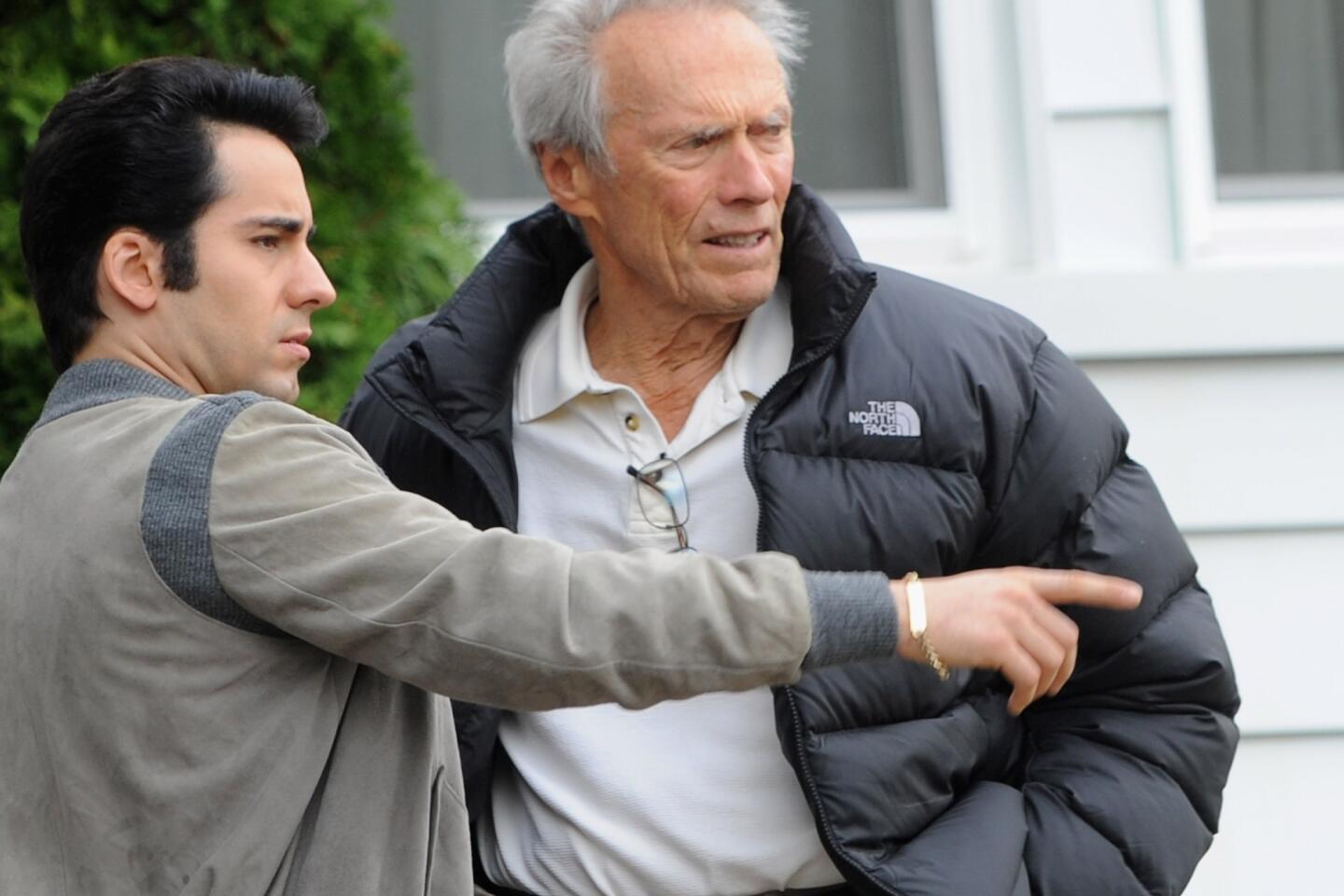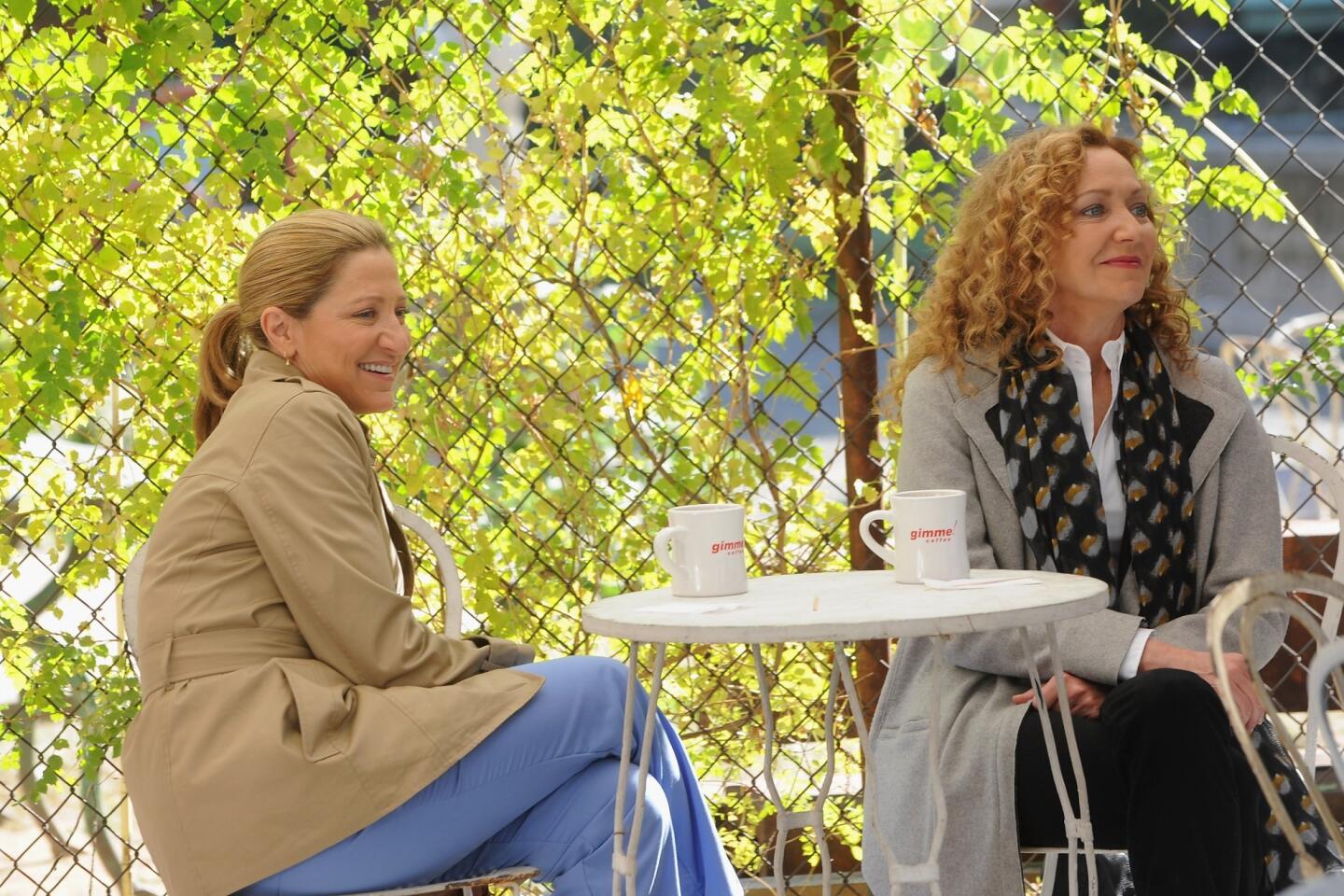Review: Two minds click in ‘The Killing’
- Share via
“The Killing,” whose third season (but only its second case) begins Sunday on AMC, is the story of actors Mireille Enos and Joel Kinnaman and the characters they play, Seattle police detectives Sarah Linden and Stephen Holder. She is small and he is tall; she’s tight, he’s loose. Like Scully and Mulder, they call each other by their surnames.
Everything else, as compelling as it might be — and it can be very compelling — is decoration on that central fact and relationship. When Enos-Linden and Kinnaman-Holder are apart, we are to some degree marking time, counting the measures, until we see them together. Not necessarily “together” together — though no man and woman partnered in a police procedural are ever immune from that romantic expectation. Indeed, “The Killing” raises the question early in its season premiere in order to dismiss it — and by dismissing it, to raise it again.
CRITICS’ PICKS: What to watch, where to go, what to eat and more
Though its first two seasons took from April 2011 to June 2012 to broadcast, by the series’ own timeline — in which each episode represents the events of a single day, a conceit borrowed from the Danish original, “Forbrydelsen” — Linden and Holder worked together for a less than a month. As the new season begins, they haven’t seen each other in something like a year. They have history, then — and one shared intense experience — but not a lot of it.
The real-world adventures of the series — disgruntled Season 1 fans put out that the first mystery did not conclude until the end of Season 2, series rescued from death by a deal with Netflix — have been much discussed. Still, though most cop shows solve 26 crimes in 26 episodes, the long haul to the finish line was fine by me. God, someone said, is in the details, but so is good fiction.
That said, as prospects for a fourth season go, it’s a good thing that, as AMC has loudly and repeatedly proclaimed, this will be a one-case year.
Mood remains paramount; it is a very blue show, temperamentally and visually. The Seattle we see here is a kind of parallel Seattle, darker, rainier, more mountainous, less ... American than the actual city. (Because it is Vancouver, to begin with.) For all the establishing-shot flyovers of the city, whenever we are on the street, we are somewhere else, a fundamentally poetic place whose soggy decrepitude has a vaguely post-apocalyptic feel.
We begin, as we began before, with a dead teenager. (Her head has been cut off, but violence in the show tends to happen off-screen, and even when on-screen is represented discreetly.) Holder, who has been “climbing the PD food chain,” now wears a suit but still talks street; he has a new partner, whose boorishness and lack of interest in anything but his own comfort or career the script oversells, though Gregg Henry, who plays him, manages it well.
Linden is in retreat, working for the Vashon Island Transit Authority, keeping an eye on the ferryboats, and doing her best impression of a happy person. She has a not-quite boyfriend whose question, “You want to get off the island later, go downtown later, catch a band or something?” tells us in a single stroke that this relationship, like Linden’s engagement in previous seasons, is doomed.
Holder arrives at her isolated island house; they lie to each other about having quit smoking; he tells her that his case resembles one she had worked on before and whose apparent perpetrator (an unnerving Peter Sarsgaard) is about to be executed. She refuses to be drawn in: “Not every victim’s worth it,” she tells him. “You start caring, you’ll end up like me, working for minimum wage on a ferry.”
Well, you know where that’s headed. Before long, Linden’s smile grows rueful as she tells her not-quite boyfriend, “You don’t know me. I break things. I do. I break them, and they don’t ever get fixed.” Enos is a handsomer woman than most, but she’s also willing to look bad, to let the furrows in her brow do the work nature intended. There is great control in her performance but also a kind of surrender.
Where the first “Killing” case roamed the world of the powerful, the current one — partially inspired, creator Veena Sud has said, by the photojournalism of Mary Ellen Mark — takes place among the powerless, kids living on the streets, in squats and shelters, fending for themselves. And where the earlier story looked at how the death of a child can break a family, the families here are broken to start, with new cohorts improvised from their shards.
In getting down to business more quickly, with a narrower focus and surely fewer red herrings, will the new season win back viewers that earlier ones lost? With “Top of the Lake” and “Rectify,” we’re seeing a growing respect for the slow and steady drama. The network has advertised the new year as a serial-killer story — a popular theme but also a little disappointing, as the motivations of crazy people are not very interesting, your 5-foot shelf of books on the Manson family notwithstanding.
Still, I trust “The Killing” to be less than commonplace. The first episode took a little while to seem real, but, as Holder would say, I was feeling it before long. Like Linden, I was drawn back in.
-----------------------------
‘The Killing’
Where: AMC
When: 8 p.m. Sunday
Rating: TV-14 (may be unsuitable for children under the age of 14)
More to Read
The complete guide to home viewing
Get Screen Gab for everything about the TV shows and streaming movies everyone’s talking about.
You may occasionally receive promotional content from the Los Angeles Times.
